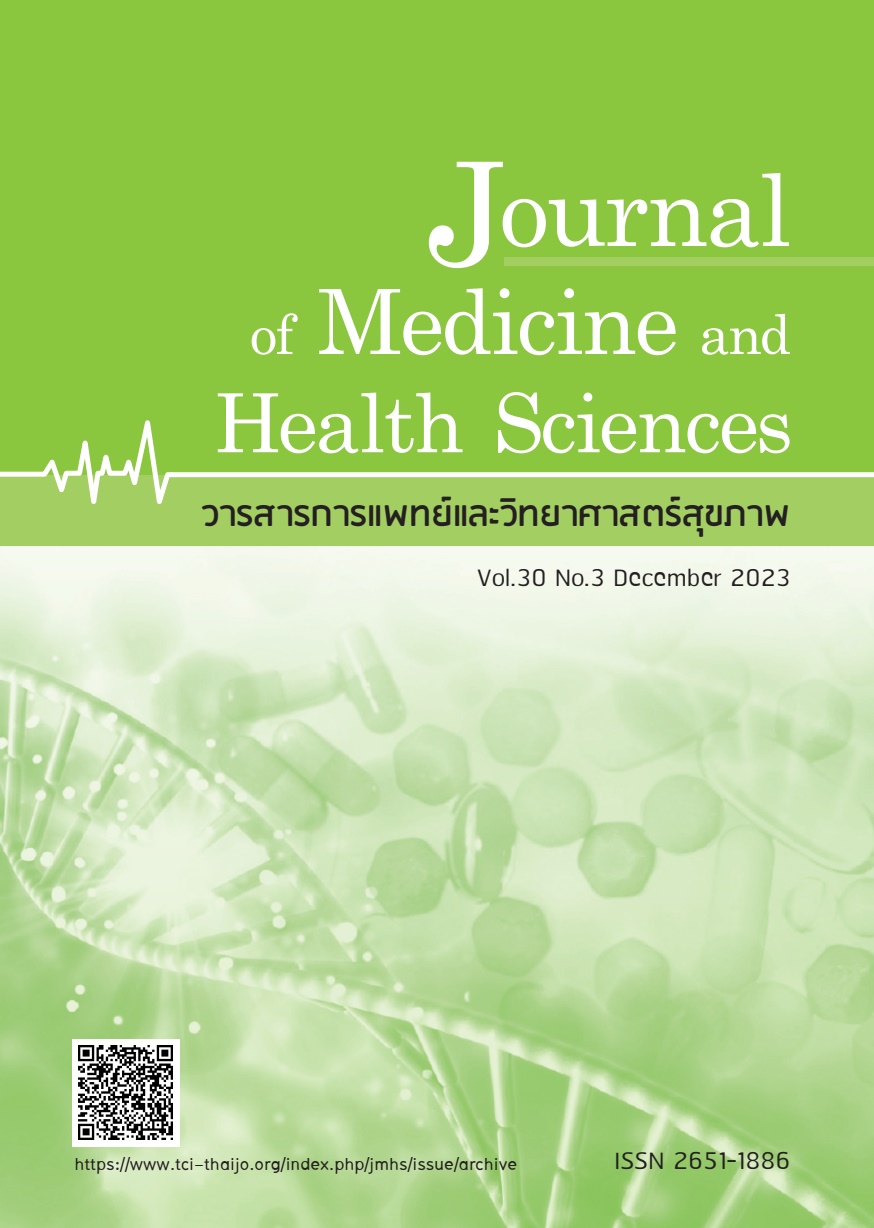Comparison of postoperative muscle strength and ambulation ability between two different concentrations of bupivacaine in patients undergoing gynecologic oncology surgery under combined general-epidural anesthesia: A double blinded, randomized-controlled study
Keywords:
gynecologic oncologic surgery, epidural analgesia, muscle strength, ambulation abilityAbstract
Gynecologic oncology operations constitute major surgery. Optimizing pain management and enhancing patient recovery with early ambulation can reduce postoperative complications. Epidural analgesia is a good technique to control pain; however, it can have some side effects. One of the most common side effects is lower motor weakness, which can impede early ambulation. The primary outcome of this double-blinded, randomized controlled study was to compare muscle strength, and secondary outcomes were to study the ability to ambulate, pain score, and complications between two concentrations of bupivacaine. One hundred and ten patients ASA I-II who underwent surgery and received epidural analgesia were included and randomly assigned to two groups. Patients in group A were treated with 0.1% bupivacaine plus fentanyl 2 mcg/ml. Patients in group B received 0.0625% bupivacaine plus fentanyl 2 mcg/ml. At 24 and 48 hours postoperatively, muscle strength, ambulation ability, pain score, and complications were compared. The results indicated that muscle strength, as assessed using the Modified Bromage scale measurement, showed no statistical difference between the two groups. Furthermore, there was no statistical significance in ambulation ability between both groups (at 24 hours, group A=52.9% vs group B=68.8% (p=0.110) and at 48 hours, group A=92% vs group B=94% (p=0.679)). Additionally, the pain score, incidence of hypotension, nausea, vomiting, and itching results were also not significantly different. In conclusion, both concentrations of bupivacaine had comparable characteristics of pain management in terms of muscle strength, ambulation ability, pain score, and side effects. Therefore, 0.0625% bupivacaine plus fentanyl 2 mcg/ml may be used in patients undergoing gynecologic oncology surgery to optimize pain control and promote enhanced patient recovery.
References
Bogani G, Sarpietro G, Ferrandina G, et al. Enhanced recovery after surgery (ERAS) in gynecology oncology. Euro J Surgical Oncology 2021;47:952-9.
Straubhar AM, Parsons M, Francis S, et al. Refusal of surgery and survival outcomes in endometrial cancer. Inter J Gynecol Cancer 2021;31:1236-41.
Gregg N, Jamie BG, Eleftheria K, et al. Guideline for perioperative care in gynecologic/oncology: Enhanced Recovery After Surgery (ERAS) Society recommendations. Int J Gynecol Cancer 2019;29:651-68.
Pandraklakis A, Haidopoulos D, Lappas T, et al. Thoracic epidural analgesia as part of an enhanced recovery in gynecologic oncology: a prospective cohort study. Int J Gynecol Cancer 2023;0:1-6.
Huepenbecker S, Cusworth S. Continuous epidural infusion in gynecologic oncology patients undergoing exploratory laparotomy: The new standard for decreased postoperative pain and opioid use. Gynecol Oncol 2019;153:356-61.
Ferguson S, Malhotra T. A prospective randomized trial comparing patientcontrolled epidural analgesia to patientcontrolled intravenous analgesia on postoperative pain control and recovery after major open gynecologic cancer surgery. Gynecol Oncol 2009;114:111-16.
Moslemi F, Rasooli S. A comparison of patient-controlled epidural analgesia with intravenous patient-controlled analgesia for postoperative pain management after major gynecologic oncologic surgeries: A randomized controlled clinical trial. Anesth Pain Med 2015;5:e29540.
Santiago A, Filho A, Candido E, et al. Perioperative management in gynecological surgery based on ERAS program. Rev Bras Ginecol Obstet 2022;44:202-10.
Peach M.J. Postoperative epidural fentanyl infusion-is the addition of 0.1% bupivacaine of benefit? Anaesth Intens Care 1994;22:9-14.
Ahmed A, Baig T. Incidence of lower limb motor weakness in patients receiving postoperative epidural analgesia and factors associated with it: An observational study. Saudi J Anesth 2016;10:149-53.
Tsui SL, Lee DKW, NG KFJ et al. Epidural infusion of bupivacaine 0.0625% bupivacaine plus fentanyl 3 µg/ml provide better postoperative analgesia than patientcontrolled analgesia with intravenous morphine after gynecological laparotomy. Anaesth Intensive Care 1997;25:476-81.
Almeida E. Early mobilization program improves functional capacity after major abdominal cancer surgery: A randomized controlled trial. Br J of Anaesth 2017;119:900-7.
Bernard R. Fundamentals of biostatistics. 5th ed: Duxbury Press; 2000.
Badner NH, Bhandari Rakesh, Komar WE. Bupivacaine 0.125% improves continuous postoperative epidural fentanyl analgesia after abdominal or thoracic surgery. Can J Anaesth 1994;41:287-92.
Cohen S, Yeh J. Walking with labor epidural analgesia. Anesthesiology 2000;92:387-92.
Boonploeng K, Pratipanawatr S, Tangsiriwatthana T. Abdominal binder for improving postoperative physical function after benign gynecologic surgery: A randomized controlled trial. Thai J Obstet Gynaecol 2021;29:10-6.
Havey R, Herriman E, O’Brien D. Guarding the gut: early mobility after abdominal surgery. Crit Care Nurs Q 2013;36:63-72.
Tazreean R, Nelson G, Twomey R. Early mobilization in enhanced recovery after surgery pathways: current evidence and recent advancements. J Comp Eff Res 2022;11:121-9.
Panyakumlerd Y, Sirivararom P, Pisaipan K et al. The optimal concentration of fentanyl in combination with 0.0625% Bupivacaine for Patient - controlled epidural analgesia after lower abdominal surgery. Thai J Anesthesiol 2013;39:225-35. [in Thai]
Downloads
Published
How to Cite
Issue
Section
License

This work is licensed under a Creative Commons Attribution-NonCommercial-NoDerivatives 4.0 International License.



